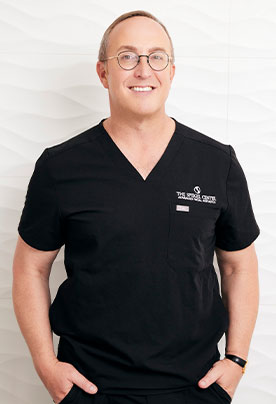
Septoplasty and rhinoplasty are like salt and pepper—two very different things and yet they are paired together all the time. We even smash together the terms for the procedures into ‘septorhinoplasty’ when they’re performed together. Why is that? It’s all nasal surgery, but we must understand what each of the procedures means individually before we can understand why they’re often performed together (and for good reason).
In Greek, “-plasty” means molding, shaping, or forming—so septoplasty is changing the shape of the septum, and rhinoplasty is changing the shape of the nose. Generally speaking, a septoplasty alone is performed to improve nasal function whereas a rhinoplasty is performed to improve function and/or appearance. The nasal septum is the dividing wall that separates the two sides of the nose. When it is deviated—twisted, bent, or otherwise obstructing one or both of the nasal passages—a septoplasty may be performed to straighten it out. This essentially entails removing the crooked parts of the septal cartilage and bone and preserving or reconstructing the parts that will keep it straight. The vast majority of septoplasties are done through an incision concealed inside the nose. When performed properly, there is no change in the appearance of the nose. The only exception is when the septum is so deviated or protruding from one of the nostrils at its caudal edge that it distorts the columella (the bridge of skin that separates the two nostrils). In these cases, performing a septoplasty can greatly improve the symmetry of the nostrils and nasal base, but the approach may be through an incision directly on the columella.
By comparison, a rhinoplasty—whether functional or cosmetic—is essentially always going to change the appearance of the nose in some way. It may be subtle or dramatic, but the structure of the external nose cannot be altered without also changing its shape. A functional rhinoplasty is often focused on improving nasal valve function (strengthening the collapsible parts of the nose), whereas an aesthetic rhinoplasty will be more concerned with the features of the nose that determine its visual appeal (the height of the dorsum or “bridge”, the shape and position of the nasal tip, etc). Cosmetic and functional goals are not mutually exclusive, and sometimes patients desire improvement with both.
So why undergo a septoplasty and rhinoplasty at the same time? The reasons may be functional, cosmetic, or both. Very often, the septum must be straightened in order to straighten a crooked nose. The nasal septum also serves as an excellent source of cartilage grafts to be used in rhinoplasty. A cartilage graft taken from the septum may be used to support the nasal valves, for example, or to reshape the nasal tip. So, a septorhinoplasty may enhance breathing by removing the crooked cartilage from the nasal septum (the septoplasty portion) and then re-purposing it into structural grafts for the nasal valves (the rhinoplasty portion) to further improve nasal function. Even if your nasal function is perfect, a septorhinoplasty may still be recommended if cartilage grafting will be necessary to create the cosmetic changes in your nose that you desire.
The one situation where patients must be extra careful is when they need a septoplasty for functional purposes, but they are unsure about whether they may want a rhinoplasty in the future. If that patient decides to undergo septoplasty now, but they hold off on the rhinoplasty, the cartilage that is removed from the septum typically goes to waste and there may be insufficient septal cartilage for grafting in a future rhinoplasty procedure. As a backup, ear or rib cartilage may be needed instead. Moreover, by separating the surgeries into two events, the patient would have to undergo anesthesia twice, two recovery periods, additional cost,s etc. For these reasons, it is generally both advantageous and convenient to combine these procedures when necessary.





